
Ask any smart home enthusiast about their biggest frustration, and you’ll likely hear the same answer: fragmentation. Your lights work on Zigbee, your sensors use Z-Wave, your camera only has a proprietary app, your thermostat requires Wi-Fi, and your entertainment system doesn’t talk to anything else. You end up juggling multiple apps, inconsistent automation options, and the nagging sense that your “smart” home could be smarter if only everything worked together.


This is where Homey comes in. Developed by Dutch company Athom, Homey has carved out a reputation as one of the most flexible smart home hubs in the market. Rather than locking you into a single ecosystem, it acts as a universal translator for your devices, bringing them all under one roof.

In this review, we’ll take a deep dive into two of Homey’s latest offerings: the Homey Pro Mini (priced at £199.99) and the Homey Bridge (£69.99). Together, they represent a clever, scalable approach to modern smart home management — whether you’re just starting with a handful of devices or running a sprawling setup with dozens of protocols.
We’ll explore the hardware, software, integrations, and real-world performance of these devices, compare them to alternatives like Home Assistant, SmartThings, and HomeKit, and highlight what makes Homey uniquely future-proof in 2025.
The Evolution of Homey
To appreciate the Homey Pro Mini and Bridge, it helps to understand where Homey came from. Athom’s original product, simply called Homey, launched in 2014 as a futuristic-looking white sphere that combined Wi-Fi, Zigbee, Z-Wave, IR, and more. It was ambitious and gained a cult following among enthusiasts who wanted “one hub to rule them all.”
Over the years, Athom refined its lineup. The Homey Pro (2023) became a powerful, standalone local-first hub for advanced users. The Homey Cloud service offered beginners an easy way to dip their toes into automation. The Homey Bridge, launched alongside Cloud, acted as a low-cost hardware gateway for devices that needed local radios like Zigbee and Z-Wave.
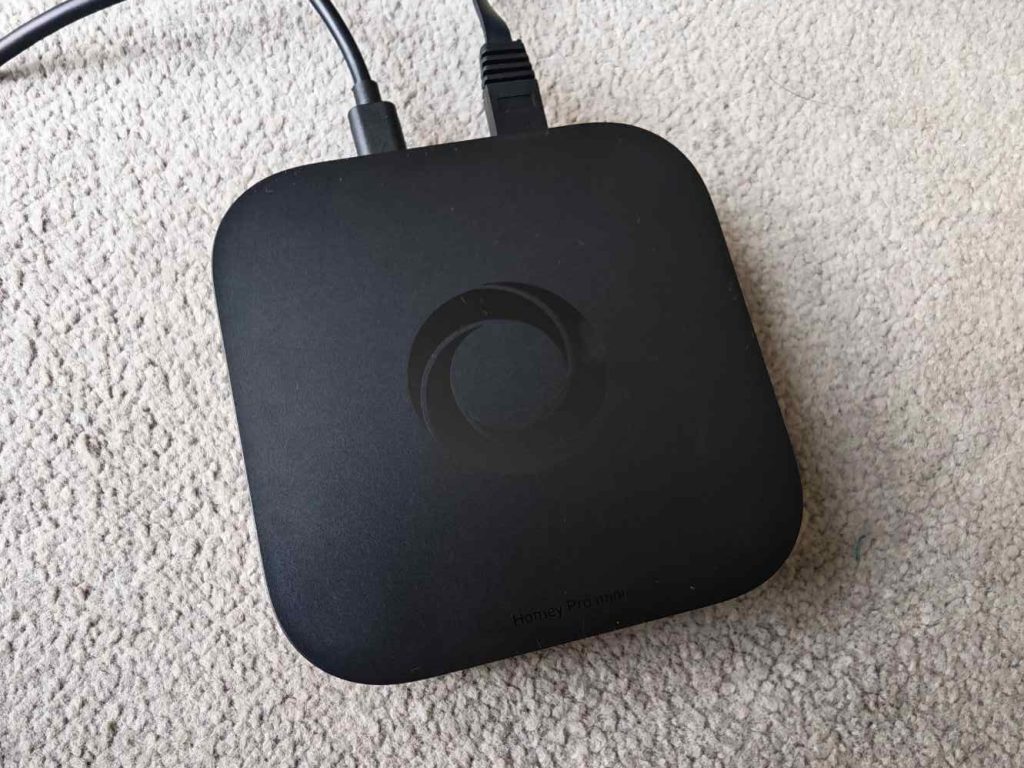
Now in 2025, the Homey Pro Mini arrives as a compact, affordable entry point for local automation. When paired with the Homey Bridge, it offers a modular path: start small, add radios when you need them, and upgrade to the full Pro if your setup grows even bigger.
This modular strategy sets Homey apart from many competitors that force you to buy one oversized hub upfront or rely entirely on the cloud.
Hardware Overview
| Feature | Pro Mini | Pro (2023) | Bridge (addon) |
|---|---|---|---|
| Zigbee | ✅ | ✅ | ✅ |
| Thread | ✅ | ✅ | ✅ |
| Matter | ✅ | ✅ | ✅ |
| Z-Wave | ❌ | ✅ | ✅ |
| Bluetooth LE | ❌ | ✅ | ✅ |
| Infrared | ❌ | ✅ | ✅ |
| 433 MHz RF | ❌ | ✅ | ✅ |
| Local Control | ✅ | ✅ | ✅ |
| App Limit | 20 | 60 | Extends protocols |
Homey Pro Mini
The Homey Pro Mini is a shrunken version of the flagship Homey Pro. Think of it as the “little sibling” that delivers most of the brains at a lower cost and in a smaller footprint.
-
Design: Minimalist and compact, it blends easily into any room. A simple LED indicator provides at-a-glance feedback without being intrusive.
-
Connectivity: Wi-Fi and Ethernet (with adapter) are supported, along with Bluetooth and Matter-over-Wi-Fi. Unlike the full Pro, it lacks built-in Zigbee, Z-Wave, or 433 MHz radios.
-
Processing Power: Enough to handle dozens of devices and complex automations simultaneously, thanks to a streamlined ARM processor and optimised HomeyOS.
-
Placement: Its tiny form factor means you can tuck it behind a router, on a shelf, or even mount it discreetly without clutter.
Homey Bridge
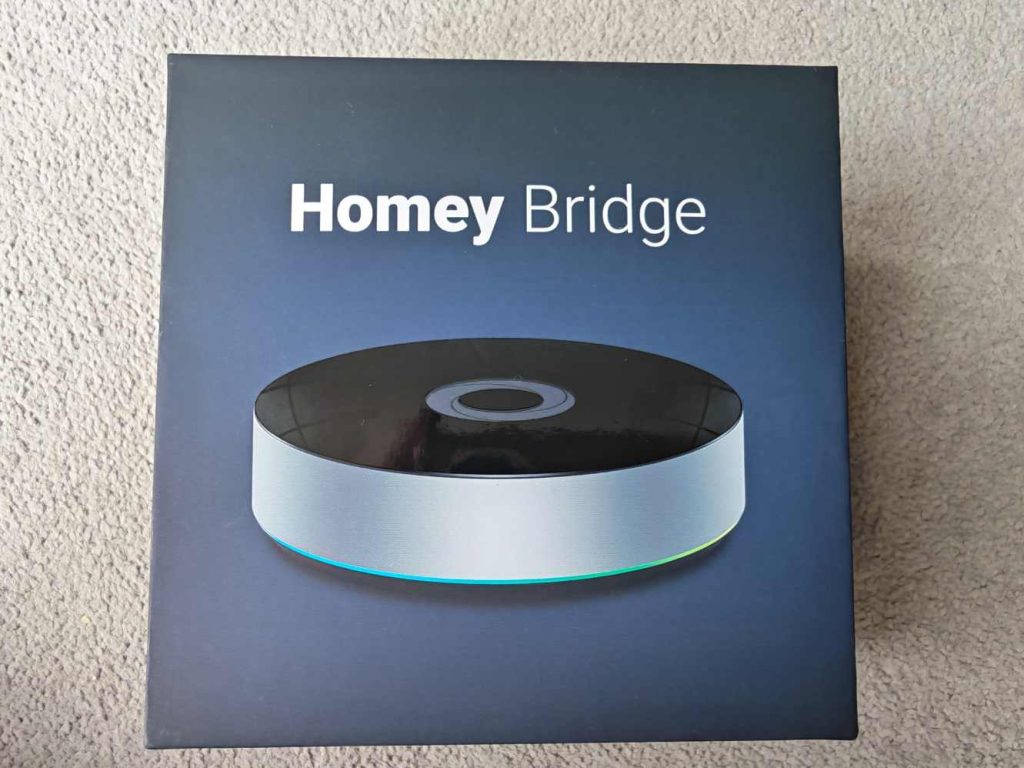


The Homey Bridge is not a hub on its own — instead, it’s a radio extender for Homey Cloud or the Pro Mini.
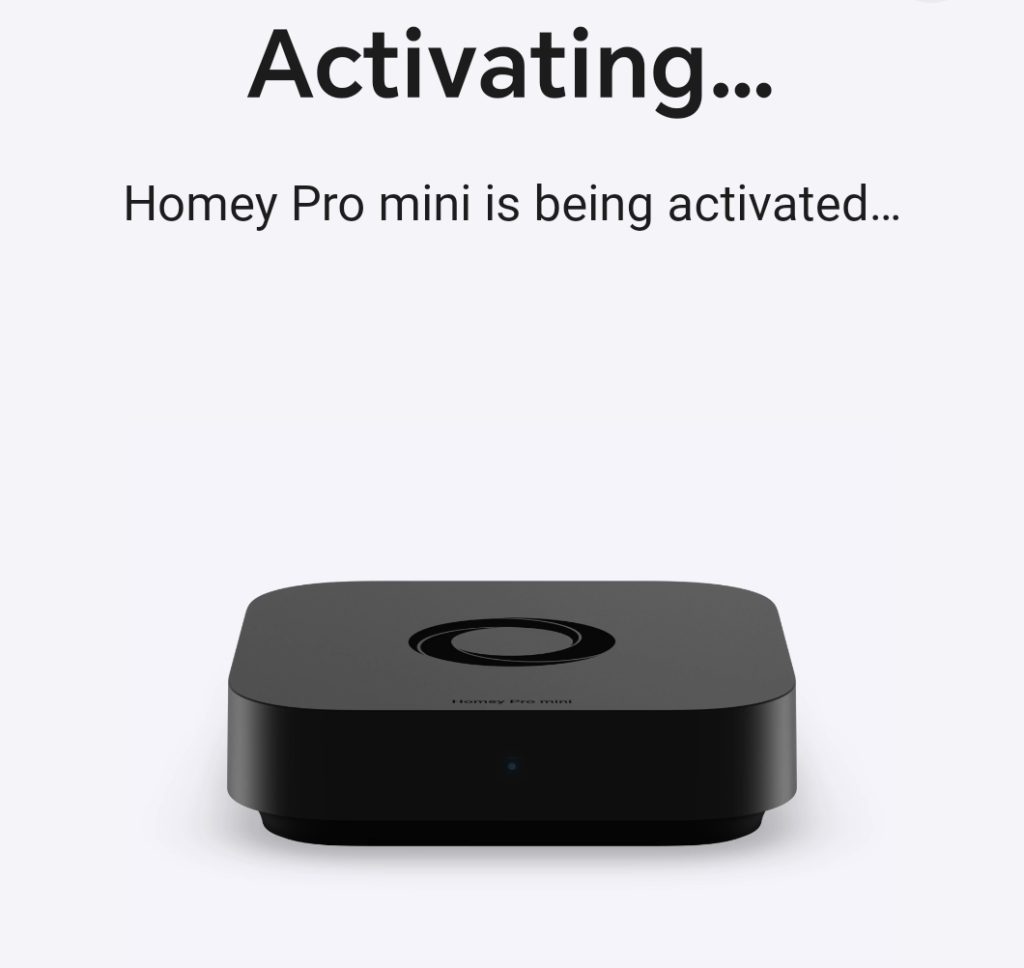

-
Design: A sleek black puck with subtle lighting. It feels premium but understated.
-
Connectivity: Adds Zigbee, Z-Wave, 433 MHz, Bluetooth, and Infrared to your Homey ecosystem.
-
Function: Think of it as a Swiss Army knife of radios. Pair it with the Pro Mini, and your hub can suddenly communicate with virtually any smart home protocol.
-
Scalability: You can add multiple Bridges to extend coverage across a larger home.


Together, the Pro Mini and Bridge form a scalable duo: start with the Mini for Wi-Fi and Matter devices, add a Bridge when you need legacy radios, and expand as your smart home grows.
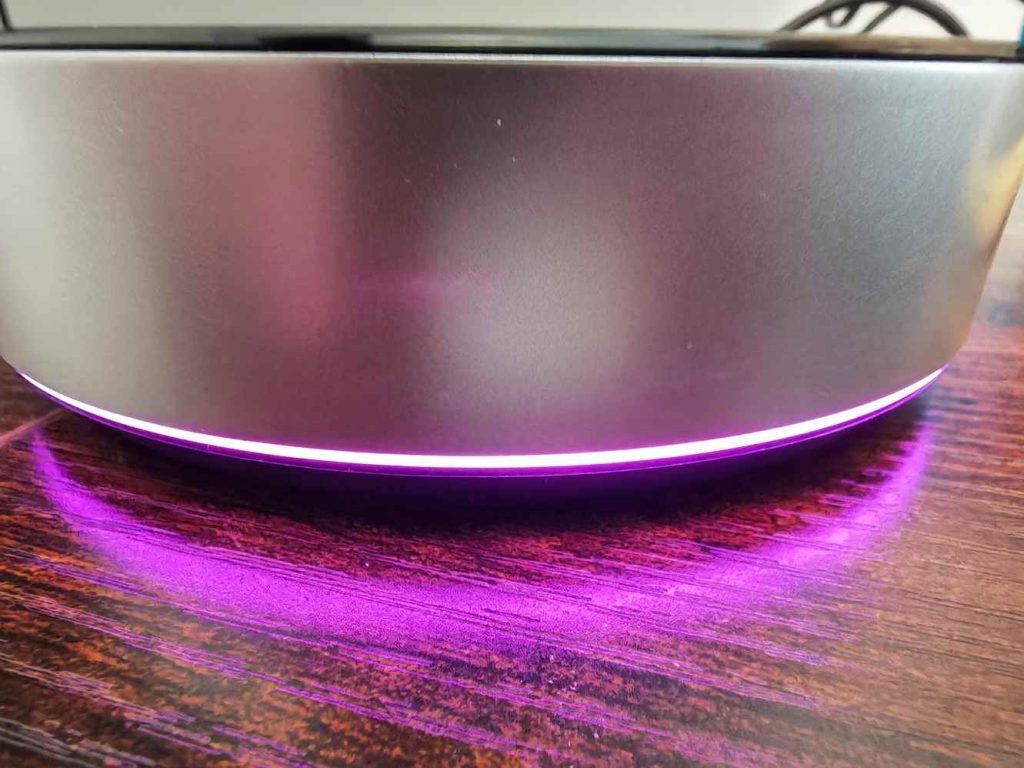

Software Ecosystem: HomeyOS, Flows, and More
Hardware is only half the story. What makes Homey stand out is its software ecosystem.
HomeyOS
HomeyOS is the brain behind the Pro Mini. It’s clean, intuitive, and accessible via the Homey mobile app or web interface. Unlike some DIY hubs that overwhelm you with complexity, Homey strikes a balance: simple enough for beginners, yet powerful enough for enthusiasts.
Flows and Advanced Flows
At the heart of HomeyOS are Flows — visual automations built around a “When… And… Then” structure.
-
When motion is detected (by a Zigbee sensor)
-
And it’s after sunset
-
Then turn on the living room lights (Hue) and start playing music (Sonos).
For power users, Advanced Flows expand this into a full drag-and-drop canvas where you can create branching logic, loops, and complex chains. Think of it as programming without writing code.
Energy Insights
Another standout feature is Homey Insights & Energy. It logs data from your devices, so you can track energy consumption, temperature trends, or sensor activity over time. For example, you could identify which appliances are draining the most power and build automations to reduce waste.
App Store for Devices
Instead of relying only on built-in integrations, Homey uses an App Store model. Manufacturers, third-party developers, and community contributors can publish Homey Apps (device drivers). This means support is constantly expanding — if a brand isn’t officially supported, chances are the community has built an integration.
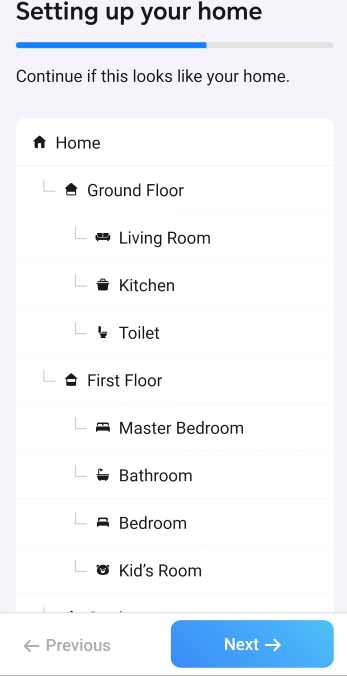
Real-World Use Cases
So how does all of this play out in everyday life? Here are some examples:
Smart Lighting
Combine Zigbee bulbs from IKEA, Hue, and WiZ into one system. Use Flows to sync them with motion sensors or circadian rhythm schedules.
Climate & Comfort
Pair a Wi-Fi thermostat with a Zigbee humidity sensor, and automate a perfect climate profile for your bedroom.
Entertainment
Trigger your TV, blinds, and lighting with a single “Movie Night” Flow. Thanks to the Bridge’s infrared radio, even older devices can join the party.
Security
Use security cameras (via Homey App) to trigger alarms, flash lights, or send push notifications when motion is detected. Integrate door locks, sirens, and contact sensors into a unified security system.
Energy Management
Track your solar inverter, EV charger, and smart plugs in Homey Energy. Automatically pause charging when energy prices spike, then resume when they drop.
APIs and Integrations: Why Homey Wins Where Others Fail
One of the biggest pain points in the smart home space is vendor lock-in. Some brands actively avoid offering open APIs, which makes their devices harder (or even impossible) to integrate with hubs.
Take Reolink cameras as an example. Reolink has fantastic hardware — affordable, high-quality IP cameras and floodlights. But one consistent complaint is the lack of an official open API. Unless you rely on ONVIF (which is limited), or dig into unofficial methods, it’s difficult to bring Reolink cameras into larger automation systems. That means if you want your Reolink floodlight to trigger a smart siren or turn on Zigbee lights through an automation, you’re often stuck.
The same is true for Dreo, a popular brand for smart fans, heaters, and air purifiers. While Dreo products have slick apps and even Alexa/Google support, they don’t expose a full local API. That limits your ability to tie them into complex routines — you can turn them on or off with a voice command, but you can’t integrate them into nuanced, multi-device automations unless the hub supports them natively.
This is where Homey’s App ecosystem shines. Instead of relying solely on official manufacturer APIs, Athom and its community of developers build Homey Apps (drivers) that act as integration layers. These apps translate device commands into something Homey can use — whether that’s through cloud APIs, local LAN connections, or even clever workarounds.
Why This Matters
-
Flexibility: Even if a brand doesn’t have an open API, there’s often a Homey App that bridges the gap.
-
Community Power: The Homey community frequently creates unofficial integrations for devices that manufacturers ignore.
-
Local vs Cloud: Where possible, Homey prefers local APIs for speed and privacy, but still supports cloud APIs when that’s the only option.
Example: Reolink in Homey
With a Homey App, you can bring your Security camera streams into the Homey dashboard, or trigger a Flow like:
-
When motion is detected by the Security camera, → Turn on Hue lights + Send push notification.
Example: Dreo in Homey
Even though Dreo doesn’t publish a public API, Homey developers have created partial integrations. That means you can add your Dreo smart fan to automations like:
-
If bedroom temperature > 24°C → Turn on Dreo fan to medium speed.
Bottom Line on APIs
Whereas ecosystems like Alexa or Google Home often stop at basic “on/off” integrations, Homey goes deeper, enabling true automation with devices that otherwise feel siloed. That makes it a future-proof hub for anyone who’s ever been frustrated by limited APIs or brands that don’t play nice.
Comparisons: How Does Homey Stack Up?
Home Assistant
The most powerful DIY platform, but it has a steep learning curve. Great if you love tinkering, less ideal for plug-and-play. Homey provides 80% of the power with 20% of the effort.
SmartThings
Polished but heavily cloud-reliant. Automations can fail if your internet goes down. Homey’s local-first approach is more reliable.
Apple HomeKit
Great for iOS users and strong on privacy, but device compatibility is limited. Homey integrates with far more brands.
Alexa & Google Home
Voice-first platforms with decent automation but limited depth. Homey complements them — you can still use Alexa/Google as voice assistants while letting Homey handle the heavy lifting.
Privacy, Security, and Reliability
Privacy is increasingly a concern in 2025. Many hubs rely on cloud processing, raising questions about data exposure.
Homey Pro Mini processes locally first, meaning your automations run even if your internet is down. Cloud APIs are only used when necessary. Regular firmware updates ensure vulnerabilities are patched, and Athom’s track record on security has been solid.
This combination of local resilience and broad compatibility is rare in today’s market.
Future-Proofing: Matter, Thread, and Beyond
The smart home industry is shifting toward Matter and Thread, universal standards backed by Apple, Google, Amazon, and others.
The Homey Pro Mini already supports Matter-over-Wi-Fi, and when paired with the Bridge, it gains backward compatibility with Zigbee and Z-Wave devices. That means you can adopt new Matter devices while still controlling your older hardware — a best-of-both-worlds scenario.
Athom has also signalled ongoing investment in the ecosystem, with regular software updates and community-driven app development ensuring longevity.
Conclusion: Who Should Buy the Homey Pro Mini + Bridge?
So where does the Homey Pro Mini + Bridge duo fit in the crowded smart home market?
-
Beginners: Start with the Pro Mini for Wi-Fi and Matter devices. Add a Bridge later if you expand into Zigbee or Z-Wave.
-
Intermediate Users: Already have a mix of devices from different brands? The Mini + Bridge combo unifies them under one dashboard with minimal hassle.
-
Advanced Users: If you want maximum power and radios built in, the full Homey Pro might still be the better choice. But even then, the Pro Mini can serve as a secondary hub or for smaller setups.
What sets Homey apart is its API flexibility and community-driven integrations. Unlike brands like Reolink or Dreo, which restrict advanced automation by not offering open APIs, Homey finds ways to bring those devices into the fold. That makes it not just a hub, but a true orchestrator of your smart home.
If you’ve ever been frustrated by juggling multiple apps, dealing with vendor lock-in, or wishing your devices could do more together, the Homey Pro Mini + Bridge is one of the most compelling solutions available in 2025.
Final Verdict: A scalable, future-proof smart home hub that balances simplicity, power, and flexibility better than almost anything else on the market today.
The Homey Pro Mini + Bridge combo earns a strong 4.2 out of 5.0 in our testing. It’s one of the most versatile and forward-looking hubs available in 2025, but not without minor limitations.
✅ Pros
-
Scalable system: start small, add radios later
-
Excellent automation engine with Flows & Advanced Flows
-
Wide device support through official + community apps
-
Local-first processing for privacy and reliability
-
Supports Matter while still handling Zigbee, Z-Wave, and older tech
❌ Cons
-
No built-in Zigbee/Z-Wave without the Bridge
-
Advanced users may prefer the full Homey Pro for raw power
-
Some integrations still rely on cloud APIs
-
Price can add up if you need multiple Bridges
The review score reflects Homey’s strength as a flexible, future-proof hub that solves fragmentation better than most rivals. For anyone tired of juggling apps and vendor lock-in, whether from Reolink, Dreo, or countless others, this is one of the smartest investments you can make in your home automation setup.
TNC Score
4.2/5.0



